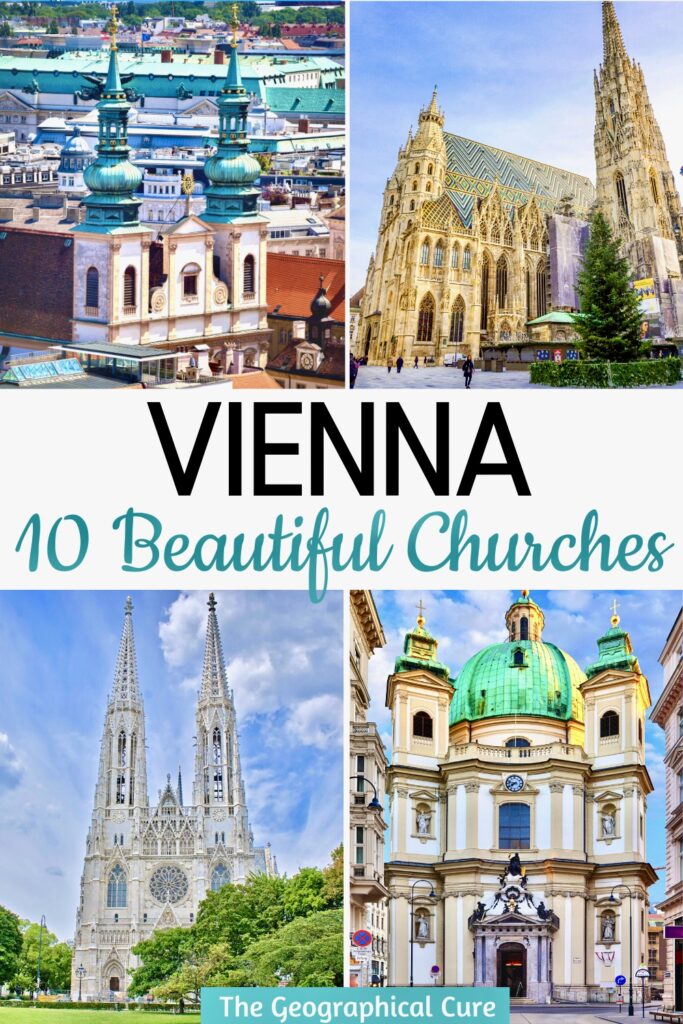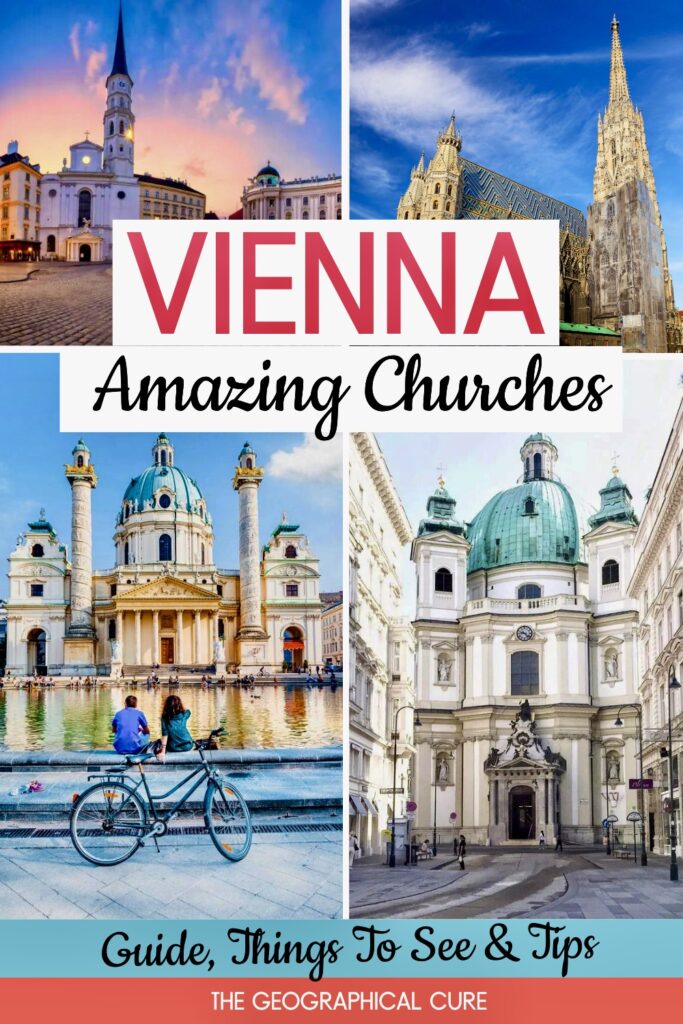Vienna is renowned for its rich cultural heritage and stunning architecture. It’s home to an array of beautiful churches, which are must visits for anyone exploring the elegant city.
Each church has its own story dating back centuries and its own magnificent art and architecture.
In this guide, I take you on a tour Vienna’s most stunning churches, where history meets beauty. You’ll see everything from the grandeur of St. Stephen’s Cathedral to the myriad ornate Baroque churches.
With the exception of St Stephen’s and St. Charles Church, Vienna’s churches are perfectly free to visit.
>>> Click here to book an old town tour of the best churches
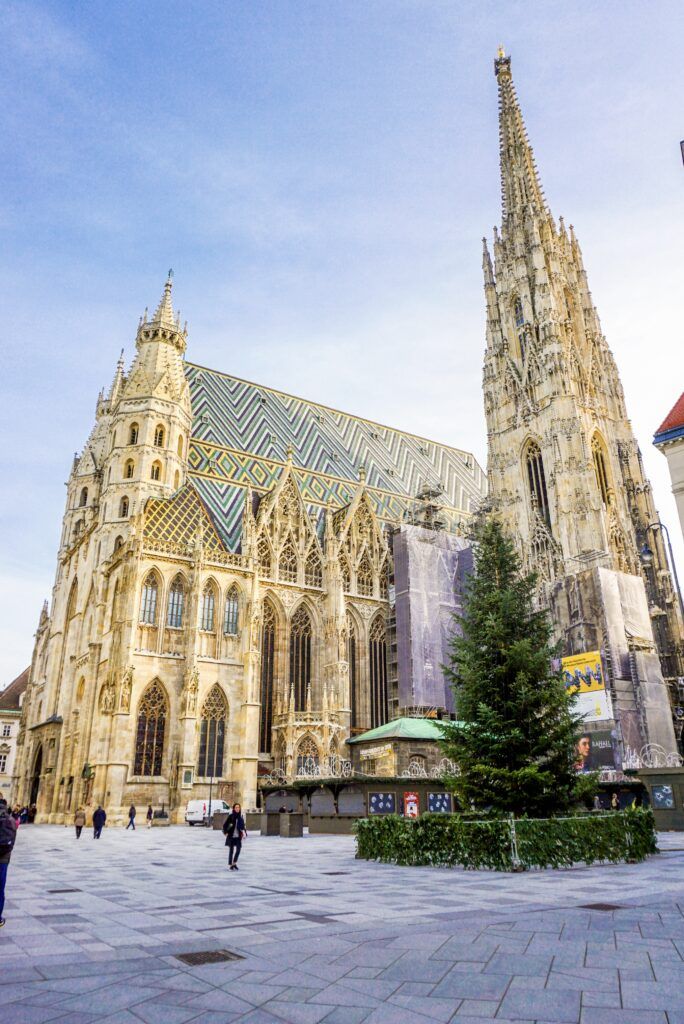
Best Churches In Vienna
St. Stephen’s Cathedral
St. Stephen’s Cathedral is Gothic architecture at its finest. Synonymous with Vienna itself, this cathedral is the city’s most popular landmark.
It’s among the world’s tallest church structures, offering breathtaking views from its towering heights.
A distinct feature is its roof, adorned with about 230,000 glazed tiles in a vivid mosaic of white, yellow, green, and brown, creating an eye-catching diamond pattern.
Inside, the cathedral exudes medieval grandeur, with its vast scale leaving visitors in awe. Each column within the cathedral has life-sized statues of saints and biblical figures, many carved from colorful and rare stones.
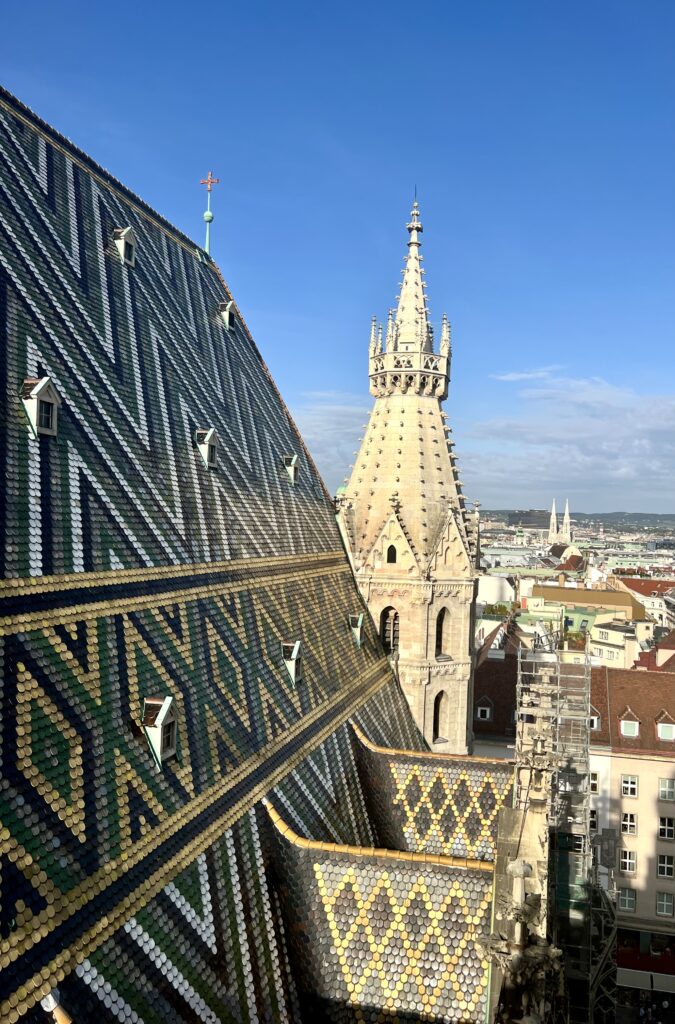
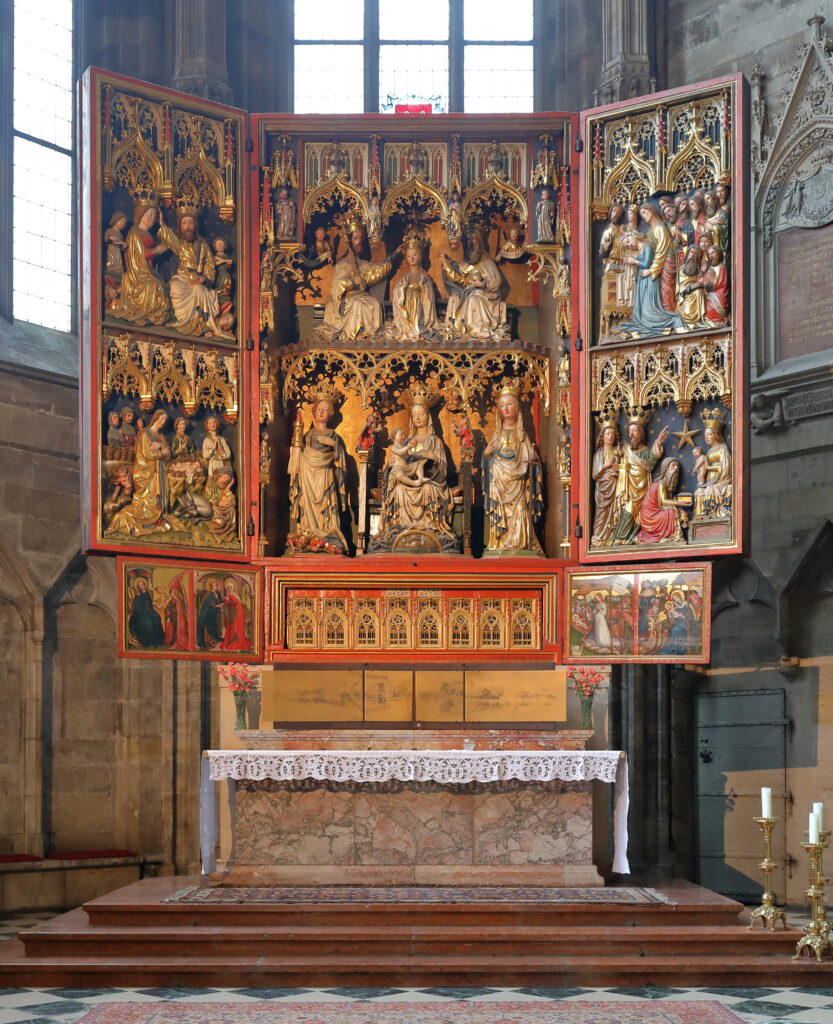
The cathedral is defined by its two prominent towers, the North and South Towers.
Standing nearly 450 feet tall, the South Tower is the loftier of the two. It’s only accessible by a narrow, winding staircase of 343 steps.
In contrast, the North Tower, about half the height at 225 feet, offers elevator access for visitors. I’ve climbed both, and you can’t go wrong either way.
Another must-see in the cathedral is its catacombs. They serve as the final resting place for many historical figures including emperors, dukes, and archbishops, each entombed in elaborate sarcophagi.
A small part of the cathedral is free to visit. But if you really want to explore, you’ll need to buy tickets.
I recommend pre-booking an all inclusive ticket to see everything and avoid long queues.
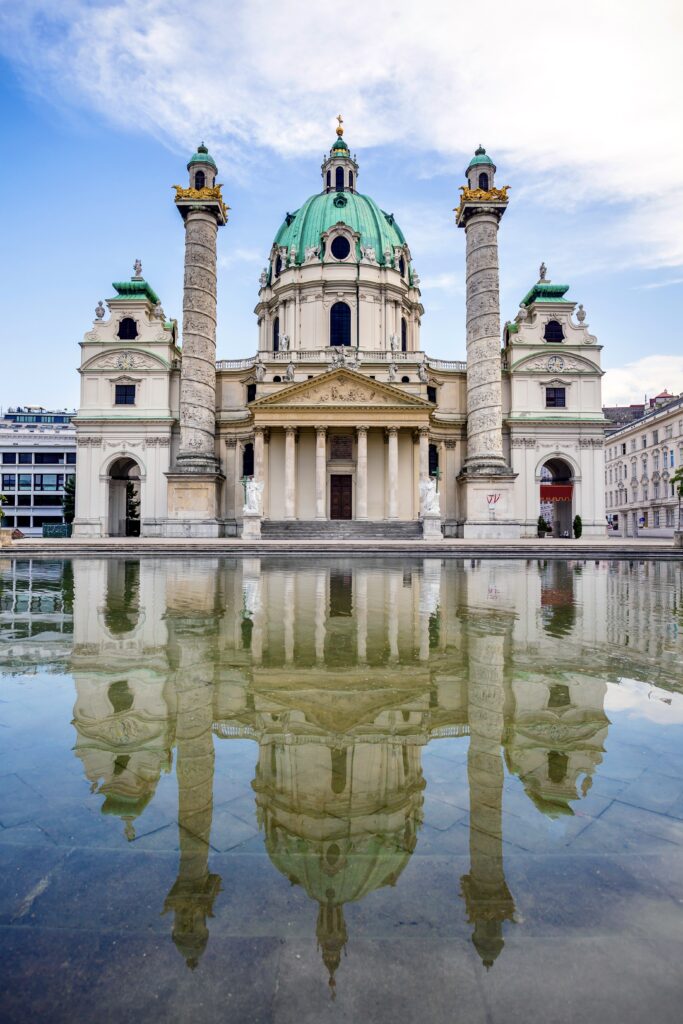
St. Charles Church
Vienna’s Karlskirche is not just any church – it’s the city’s most striking example of Baroque architecture. It was designed by Johann Bernhard Fischer von Erlach, the brainchild behind Schönbrunn Palace.
The church is dedicated to Saint Carlo Borromeo. But it also pays homage to Emperor Karl IV, artfully blending religious and royal histories.
The church has a distinctive, almost wacky, exterior. Imagine a Baroque church with a twist of Greek temple design, complete with two Roman-style columns that are reminiscent of Trajan’s Column in Rome. The columns almost look like minarets.
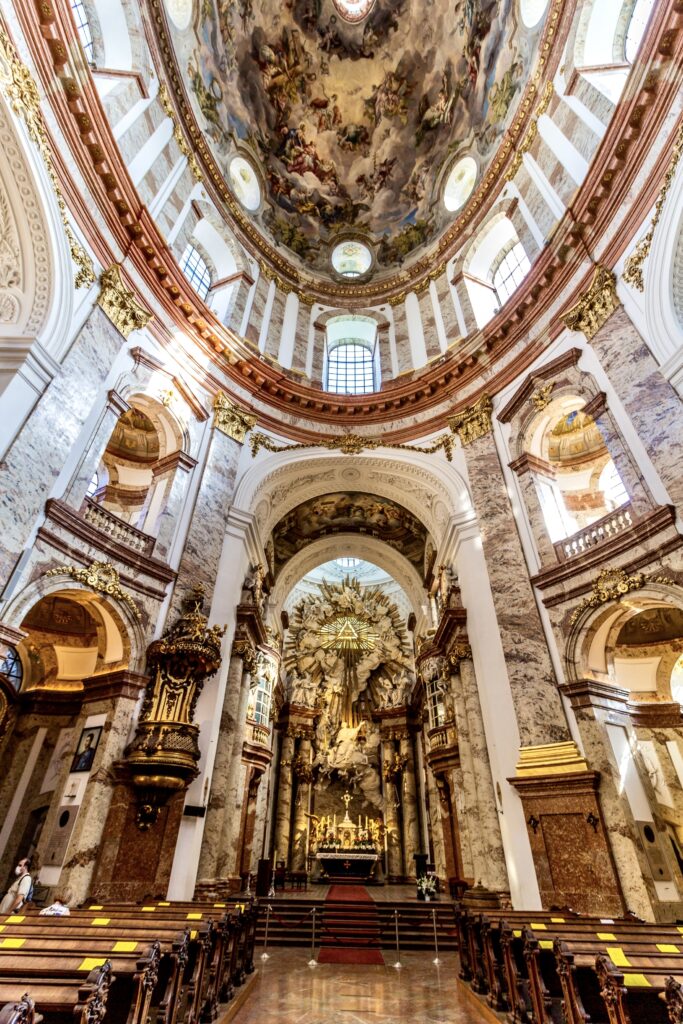
Inside, the church transforms into a pretty Rococo fantasia. You’ll be surrounded by intricate stonework, soft hued marbles, and a dramatic ceiling fresco that captures the life of Saint Borromeo.
And there’s more – a spiral staircase leads you up to a viewing terrace with panoramic views. On your ascent, you’ll pass by the church’s precious artifacts, the majestic organ, and a detailed model of the church.
The church cost 9.50 euros to visit and you can only pay with cash.
Click here to book a ticket for Vivaldi’s Four Seasons at the church.
Tip: St. Charles Church is located in Karlsplatz square. Just a few steps away, you’ll discover the Vienna Secession building, the Wein Museum, and the Naschmarkt, a bustling market brimming with a wide array of culinary treats.
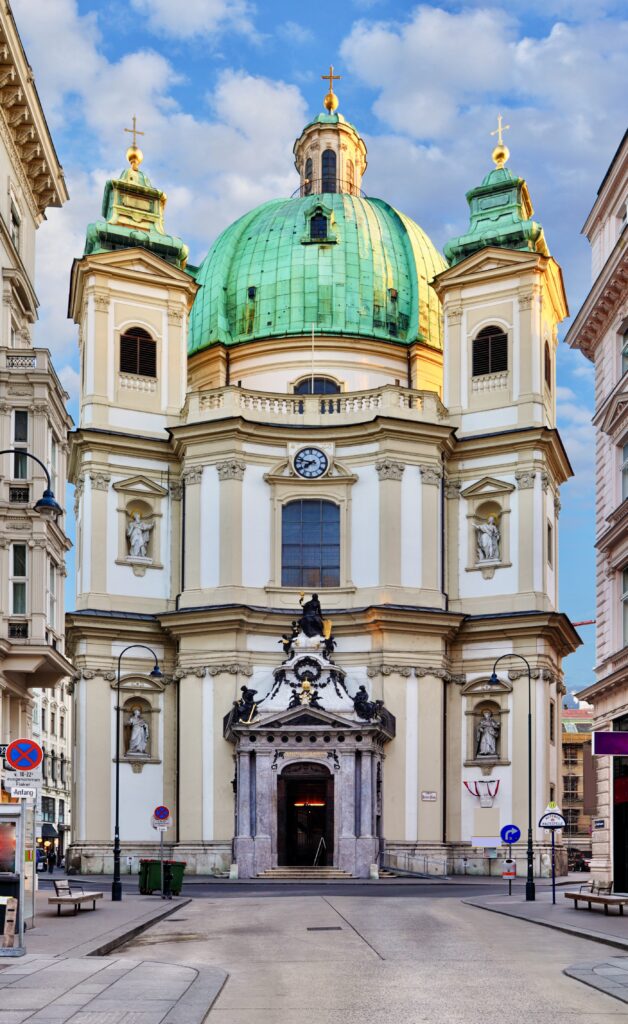
St. Peter’s Church
St. Peter’s Church is half hidden amongst its surrounding buildings. But it’s a lovely Baroque church that you shouldn’t miss.
Hildebrandt, the architect of Belvedere Palace, is believed to have supervised its completion in 1732.
The facade is immediately eye catching. It has a concave centerpiece flanked by inward turned towers, framed by pilasters. The tower niches hold sandstone sculptures of the apostles.
The interior is an oval shape. On the sides, two large chapels face each other across the nave, with smaller chapels on the diagonals.
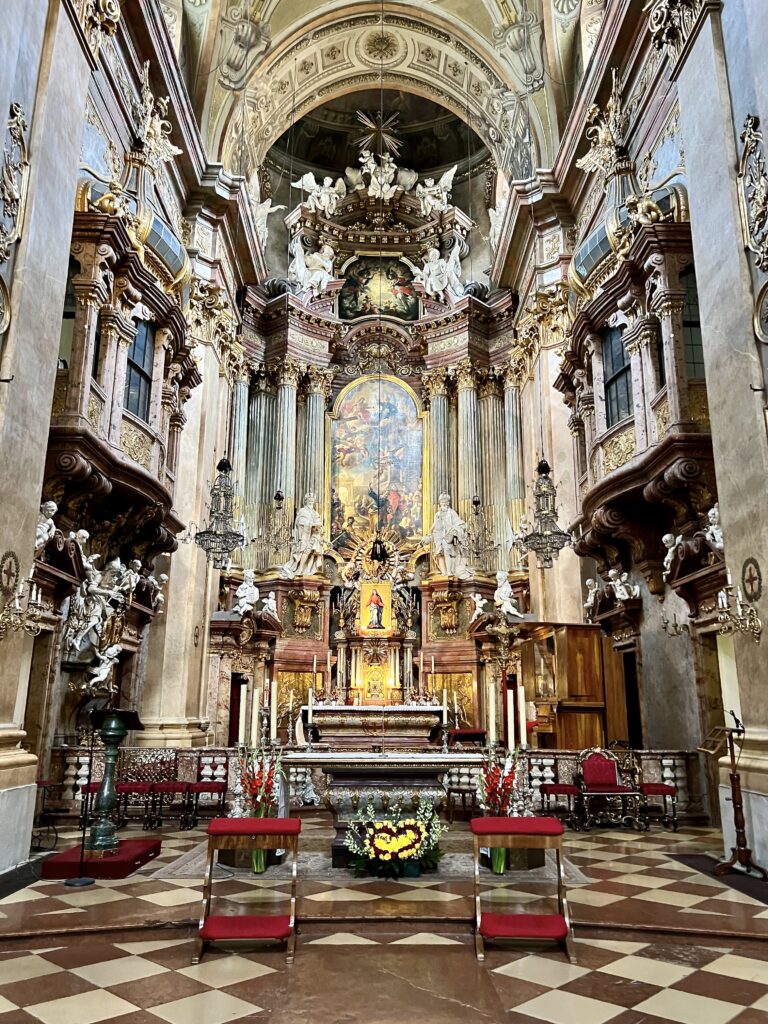
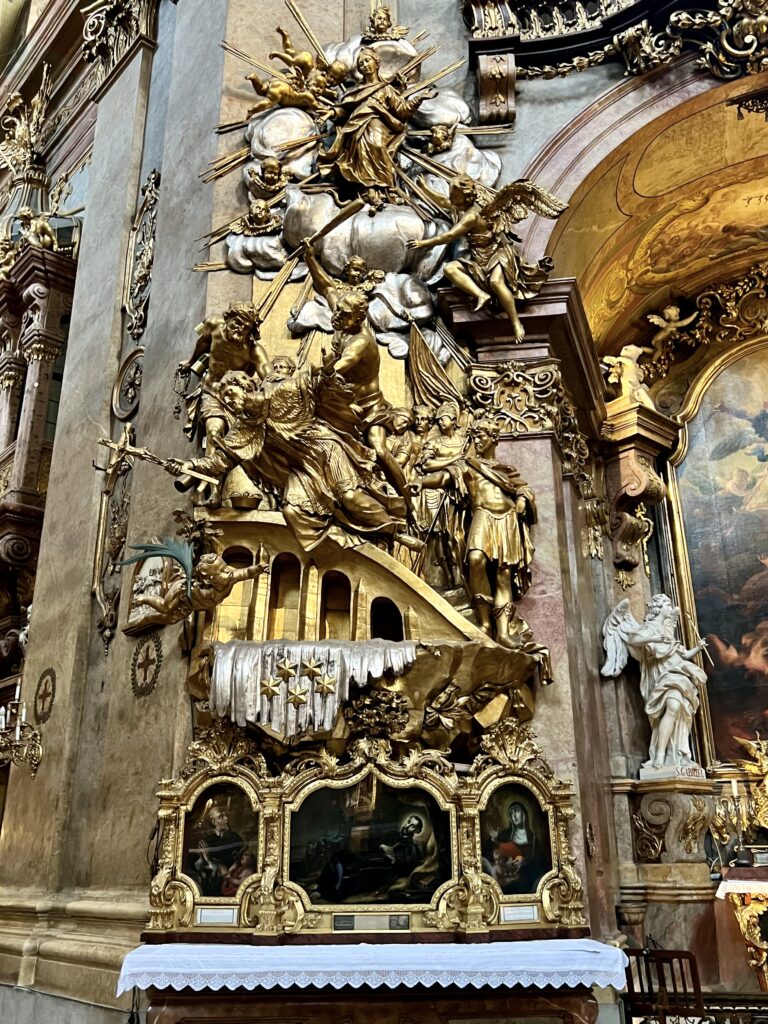
Massive pillars seem to hold the lofty dome.
One of the most striking features is the cupola, adorned with an exquisite fresco by Johann Michael Rottmayr. It depicts the coronation of Mary, surrounded by apostles, saints, and angels.
There are many other beautiful frescos, statuary, and a very elaborate pulpit with gilded wooden sculptures.
>>> Click here to book a classical concert at the church
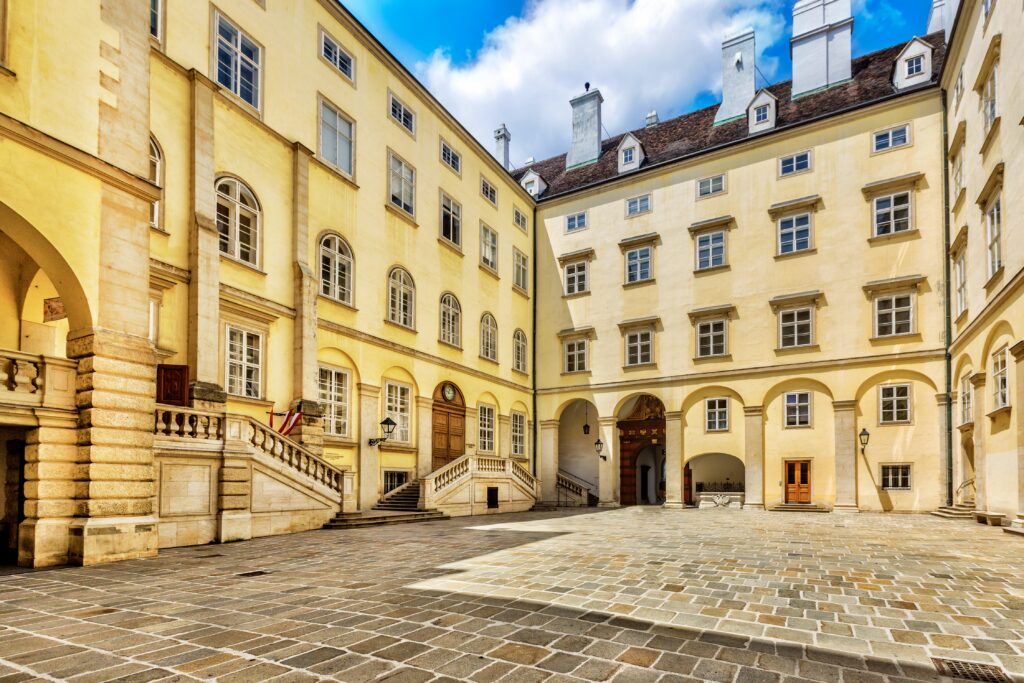
Burgkapelle
The Burgkapelle is the most ancient part of the Hofburg Palace complex, dating back to 1447. Remarkably, it has retained its original form since its construction.
The interior has classic Gothic design elements, such as pointed arches, ribbed vaults, and tall, narrow windows.
Nowadays, this medieval chapel serves as the residence for both the Court Music Orchestra and the renowned Vienna Boys’ Choir.
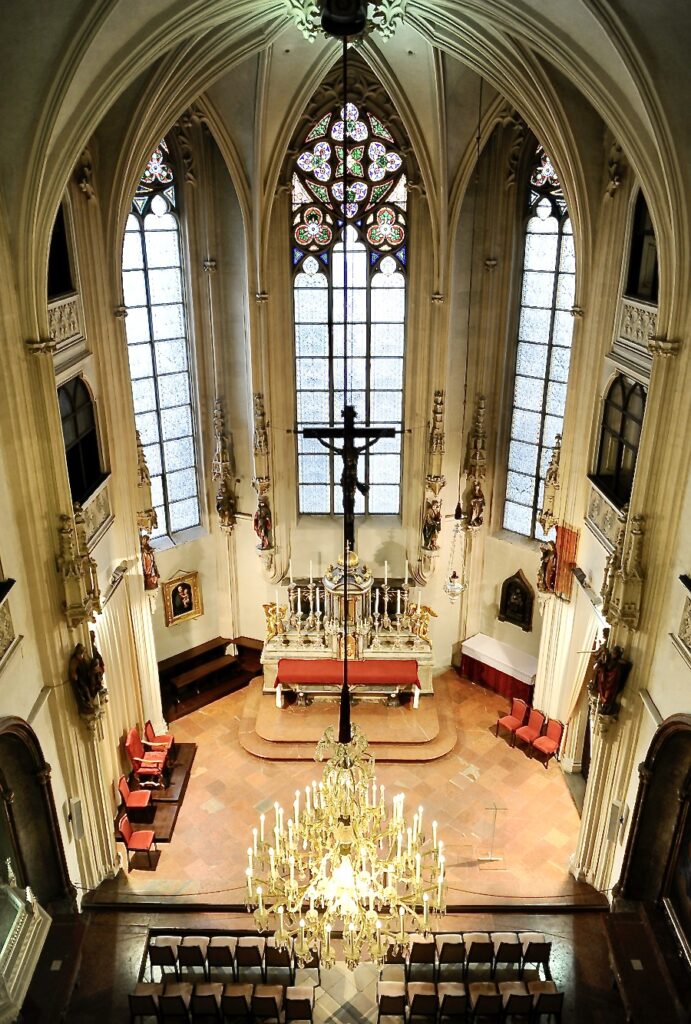
The choir’s inception traces back to the time of Emperor Maximillian I. it was initially formed to perform at both religious and royal court functions.
Following the end of the monarchy in 1918, the choir expanded its horizons, gaining international fame through tours.
Every Sunday from mid-September to June, at 9:15 am, the choir graces the chapel with masses composed by the likes of Mozart, Schubert, and Haydn.
An interesting aspect is the choir’s educational framework. The young singers, some joining as early as age 3 or 4, receive education at a dedicated private music school.
Many of these talented individuals later pursue careers as professional musicians or choir directors.
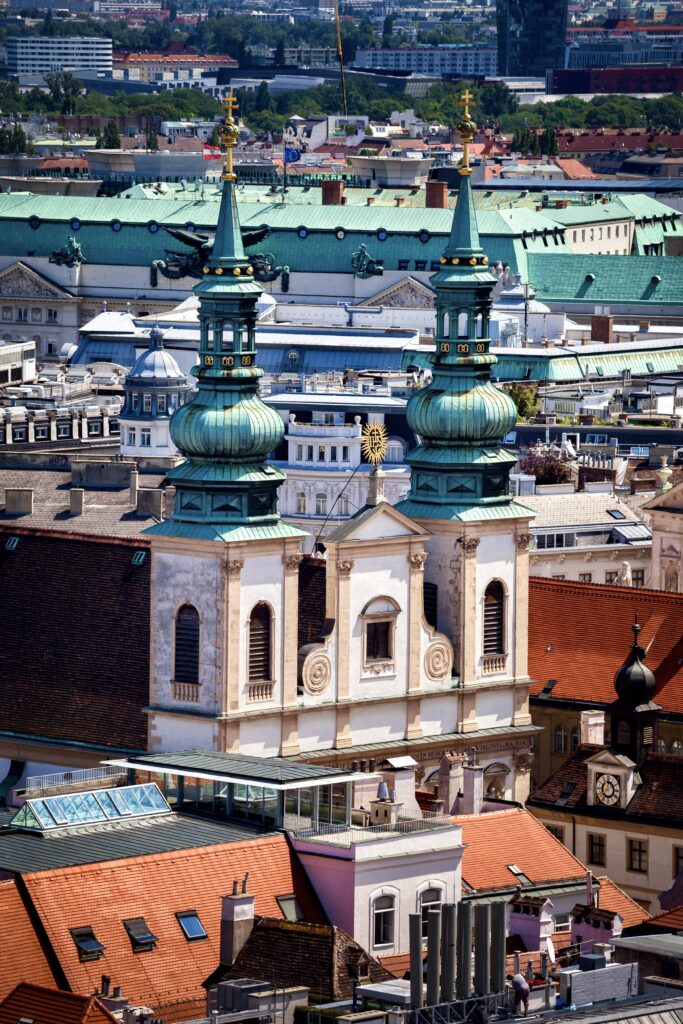
Jesuit Church
The Jesuit Church is simply lovely, and often overlooked by tourists. But it’s one of the most beautiful churches in Vienna.
The church was originally built by the Jesuits to serve the University of Vienna and was consecrated in 1627.
Its original design was rather plain and modest, typical of early Jesuit architecture. But it was rebuilt and remodeled in 1631 by Jesuit brother and talented artist Andrea Pozzo.
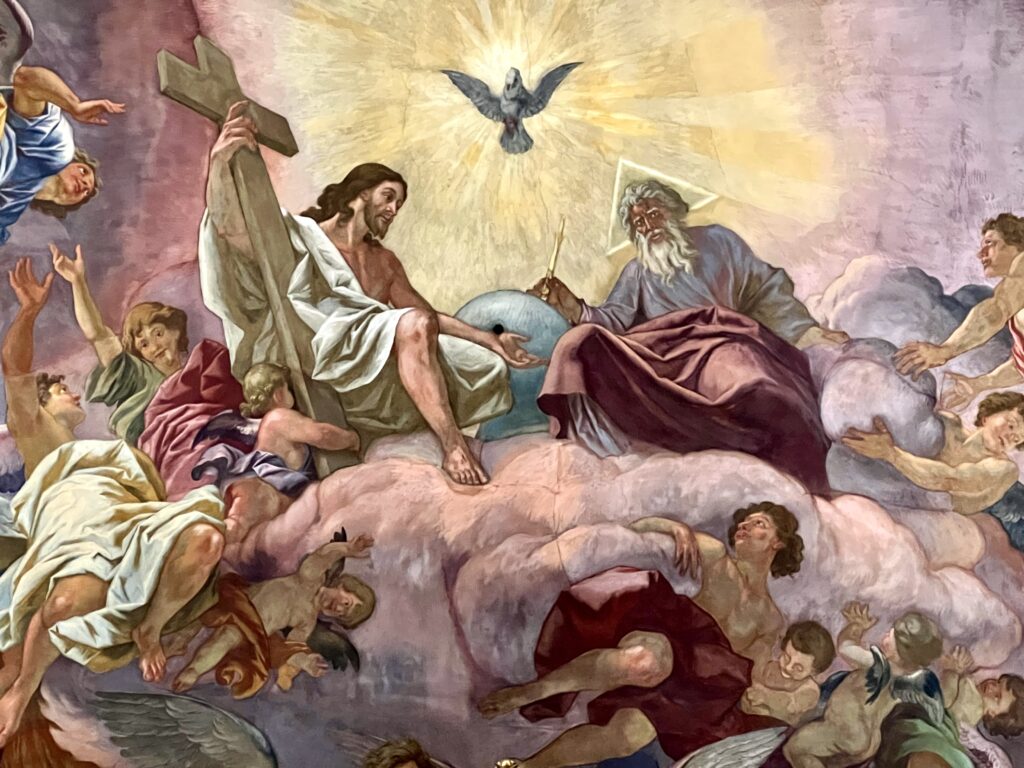
The grand building has a symmetrical facade and twin copper green towers. It’s a classic example of early Baroque architecture.
Beyond the relatively austere exterior is a spectacular pink and yellow interior.
There is a forest of marble pillars, Corinthian columns with gold capitals, gilded filigree decoration, and allegorical ceiling frescos.
It’s topped off by Pozzi’s trompe l’oeil fresco on the “fake” dome. It’s actually painted on a flat part of the ceiling, but you would never guess.
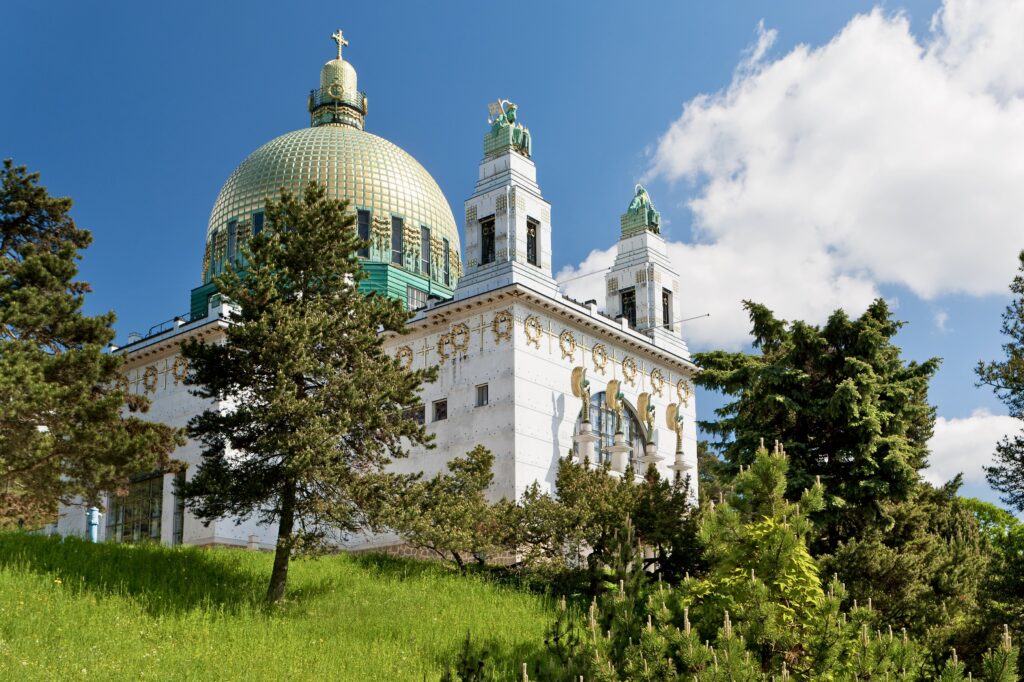
Kirche am Steinhof
This church is Otto Wagner’s greatest work. It’s also known as the Church of St. Leopold.
It’s a beautiful Jugendstil (Art Nouveau) church, with Wagner’s signature copper and marble combination.
It’s constructed primarily of white marble and glazed tiles, creating a clean and bright appearance. There are also gold Art Nouveau motifs, like laurel wreaths, in both geometric and floral designs
The church interior is equally stunning. You’ll see mosaics and stained glass windows designed by fellow Secession artist Koloman Moser.
In 2005, the copper dome was renovated and covered with 5 pounds of gold leaf.
Tips: The church is rather difficult to get to. You can take a combination of tram + bus or U-Bahn + bus. I suggest taking a taxi. While you’re there, take a stroll through the beautiful Vienna Woods or indulge in Vienna’s famous Heurigen (wine taverns).
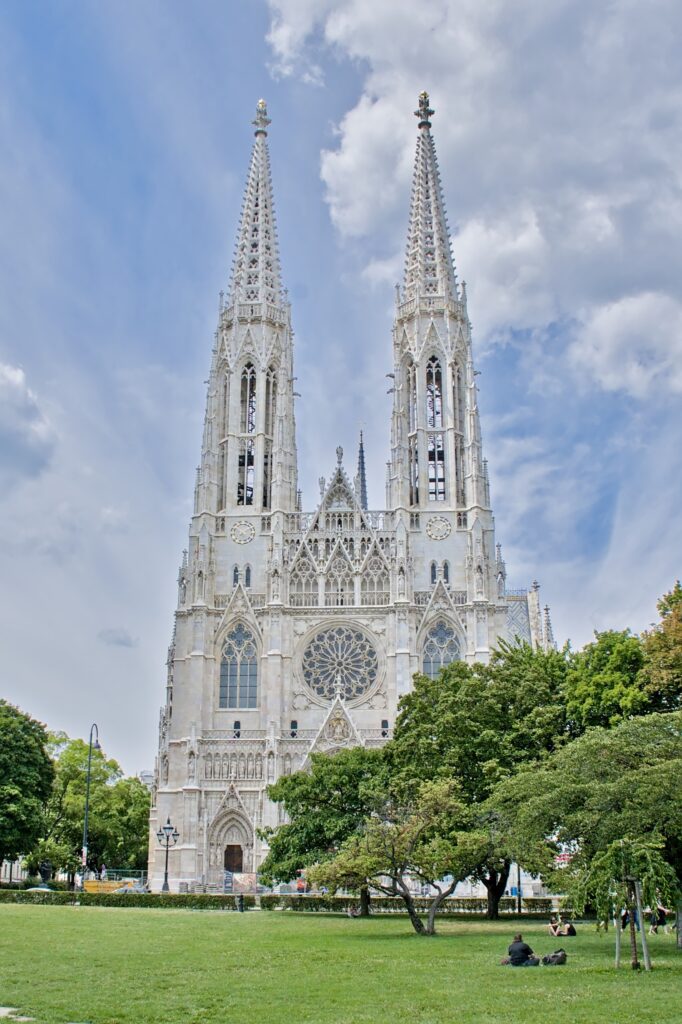
Votive Church
Votivkirche is a rather peculiar structure, set in Sigmund Freud Park. It’s a massive Neo-Gothic church in an out of the way area of Vienna.
It was designed in the 1860s by historicist architect Henrich von Ferstel. It looks like a cathedral, even though the city already had one of Europe’s finest cathedrals and no need for another one.
Why was it built? Well, Emperor Franz Joseph had survived an assassination attempt. he commissioned the church as proof that God approved of the Hapsburgs.
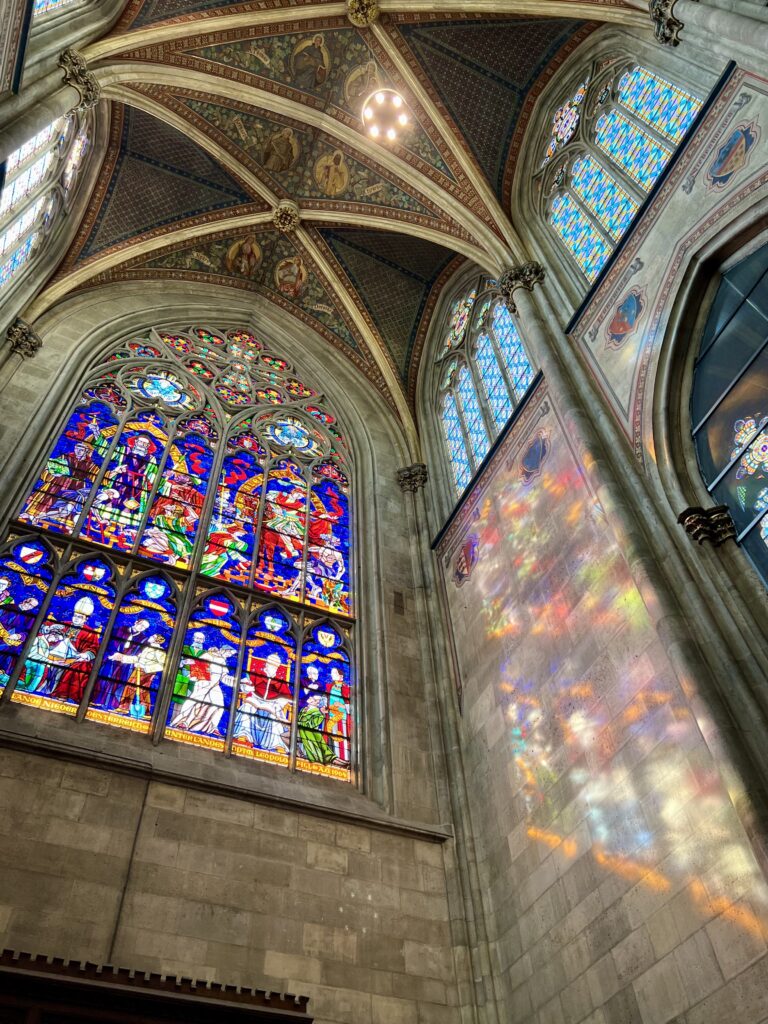
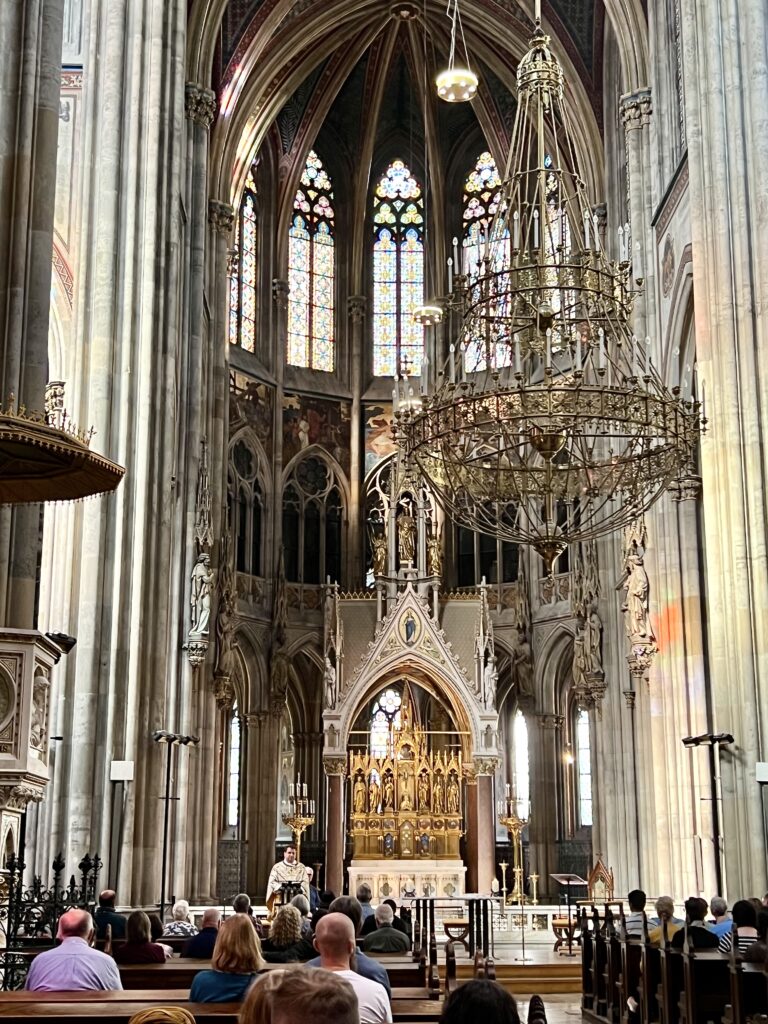
Fresnel’s design was inspired by the original plans for St. Stephen’s Cathedral, which called for two tall symmetrical towers. They almost seem to pierce the sky.
The church interior sticks to the Gothic style. There is a central nave and two side aisles.
There’s a high vaulted ceiling, vibrant stained glass windows, a Gothic tabernacle, and an ornate high altar. The colors of the stained glass reflect off the walls when the sun streams in.
There is a small museum onsite that houses artifacts relating to the church’s construction and religious history of the area.
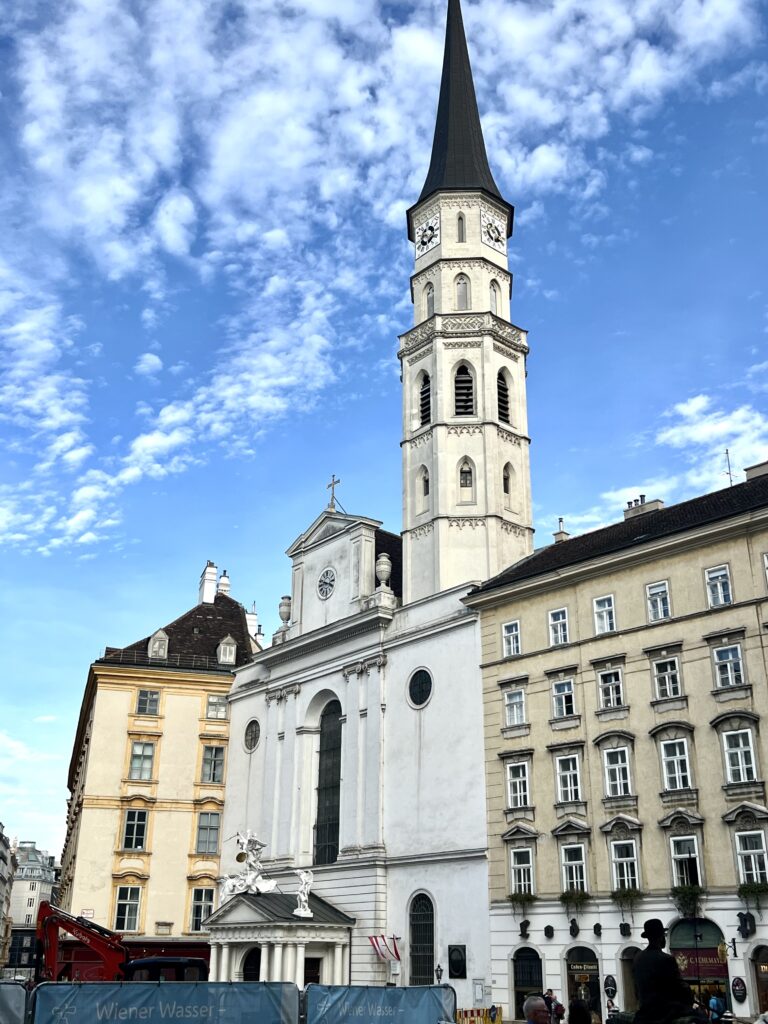
St. Michael’s Church
Michaelerkirche is one of Vienna’s oldest and most significant churches, dating from 1220-1240.
The church is an example of Romanesque and Gothic architectural styles. Over the centuries, it’s undergone various renovations and additions, incorporating Baroque and Rococo elements.
Inside, the church is rich in Baroque decoration. There’s a magnificent high altar, several side chapels with elaborate artwork, and four altars in the transept.
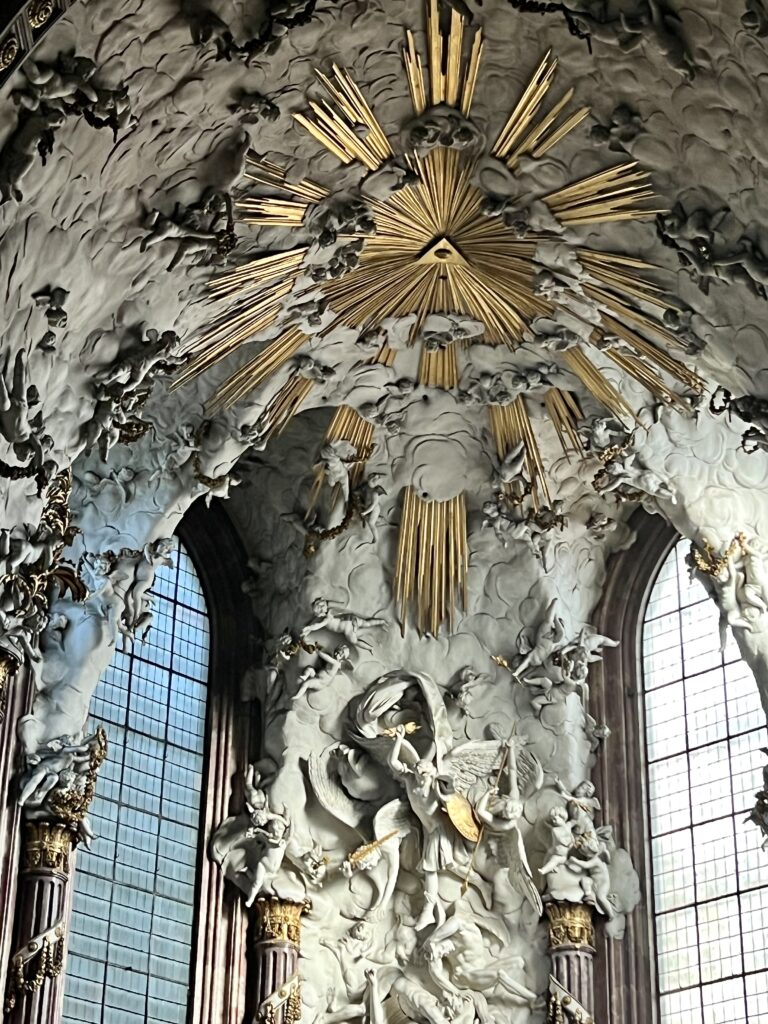
The high altar holds the icon of Maria Candia. It’s topped with an elaborate Rococo-style sculpture made of stucco alabaster.
It depicts the biblical story where the Archangel Michael expels the rebellious angels from heaven and they tumble down.
One of the church’s most notable features is the large pipe organ, on which Mozart once performed his Requiem.
St. Michael’s has a notable musical history. Joseph Haydn’s “Große Orgelmesse” was first performed here. The church is still a popular venue for classical music concerts.
Tip: At 3:00 pm, you can take a tour of the rather spooky crypt.
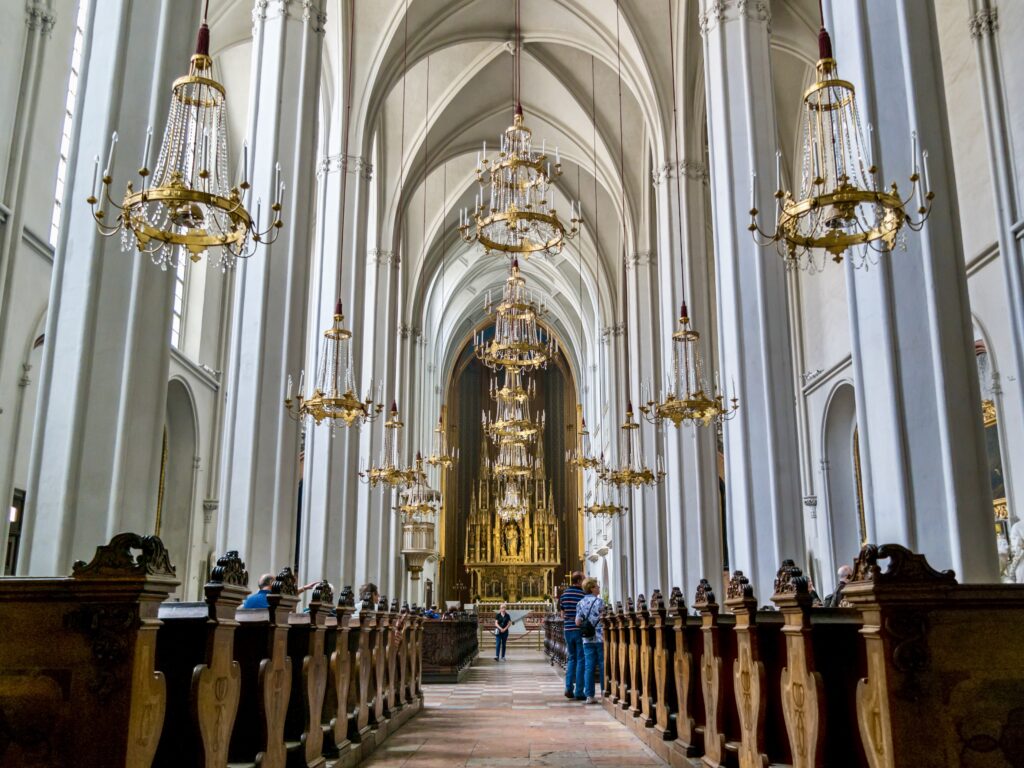
St. Augustin Church
Augustinerkirche is a historic church built in 1339 to serve the royal court. In this capacity, it was a venue for many royal weddings and funerals.
Its interior consists of a single narrow vaulted chamber. It’s painted plain white, with tall windows along each side.
The clean flowing lines of the Gothic stonework are a refreshing change from the usual Baroque stylings of Vienna.
Over the centuries, there was a gradual build up of Baroque altars and statues. But those were swept away in the 18th century when the church was restored to something close to its original 14th century appearance.
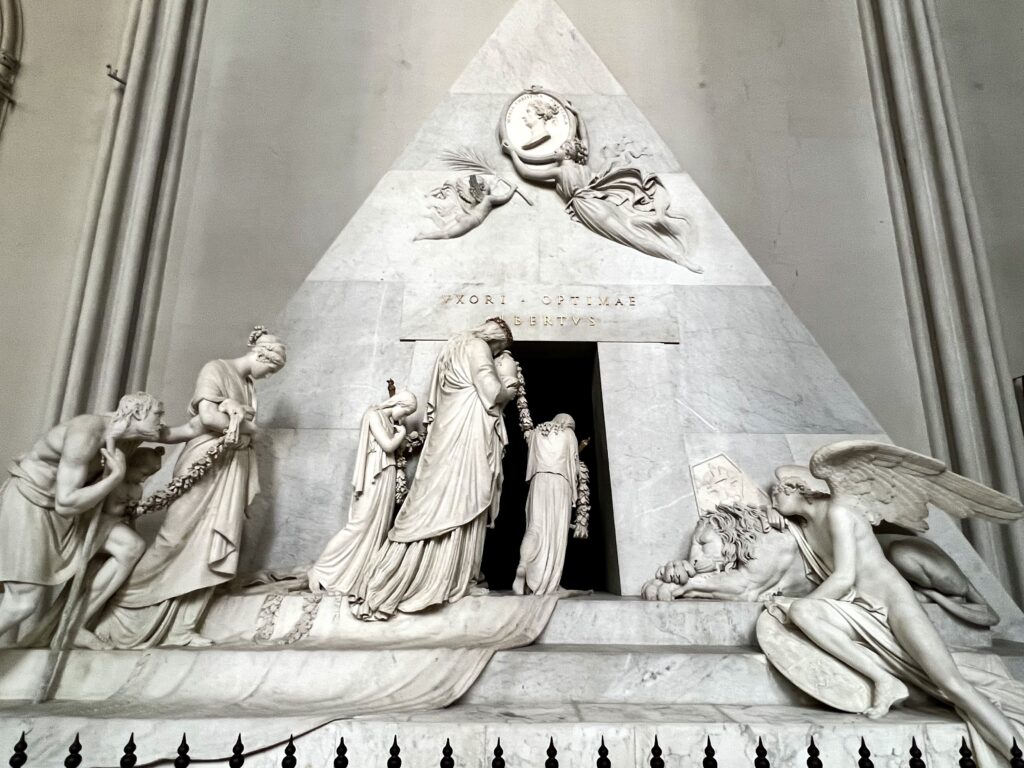
There’s a beautiful memorial designed by renowned Neo-Classical sculptor Antonio Canova in 1805. It honors the favorite daughter of Empress Maria Theresa.
It’s rather sad looking. A procession of mourners, with heads bowed, disappear into a dark open doorway, past a tearful lion.
St. Augustin is still an active church and the adjoining cloister is home to a small monastic community.
The church is renowned for its wonderful sacred music. There’s often a large queue outside the doors before Sunday morning Mass.
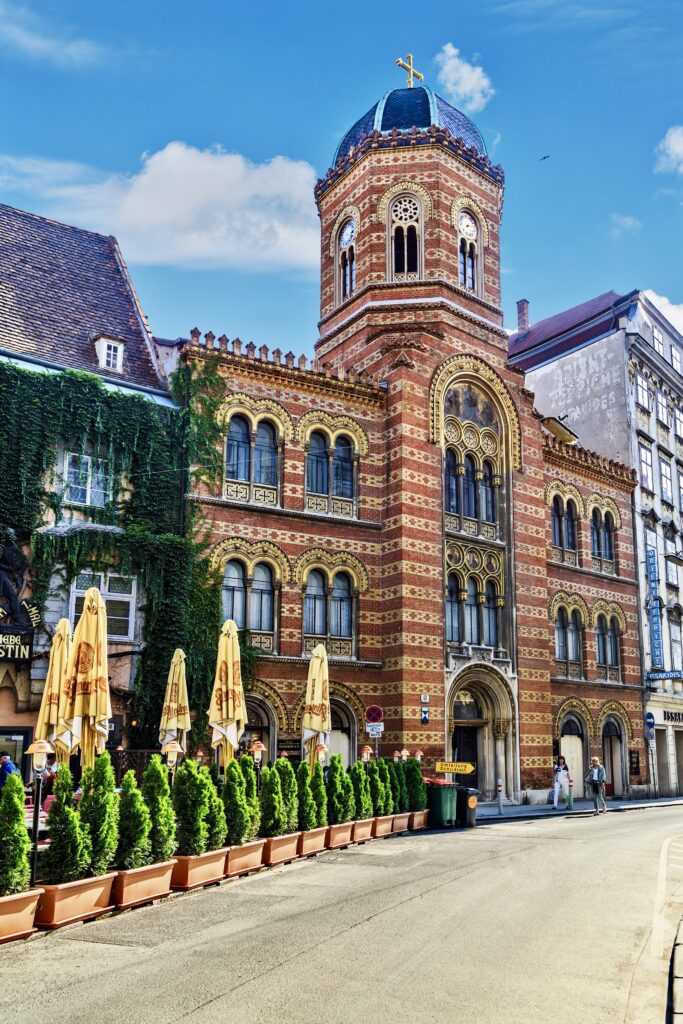
Greek Church of the Holy Trinity
For something completely different, visit the small but mighty Griechenkirche. It was built in 1861 by Vienna’s Greek community.
The exterior is gorgeous. It’s covered with densely patterned two tone brick work. It’s embellished with gilded archways and topped by a small tiled dome.
The exterior, however, provides only a mere hint of what lies within. The interior is decorated with frescos, icons, and gilded Byzantine detailing. There is a beautiful pulpit and painted altarpiece.
It’s quite dark inside. But that hardly detracts from the beautiful details.
I hope you’ve enjoyed my guide to the best and most beautiful churches in Vienna. You may find these other Vienna travel guides useful:
- 3 Days in Vienna Itinerary
- Best Museums in Vienna
- Guide To St. Stephen’s Cathedral
- Guide To the Hofburg Palace
- Guide To the Kunsthistoriches
- Guide To the House of Music
- Beethoven Guide To Vienna
- Klimt Guide To Vienna
- Guide To the Belvedere Palace
- Things To Do in Vienna in Winter
Pin it for later.

